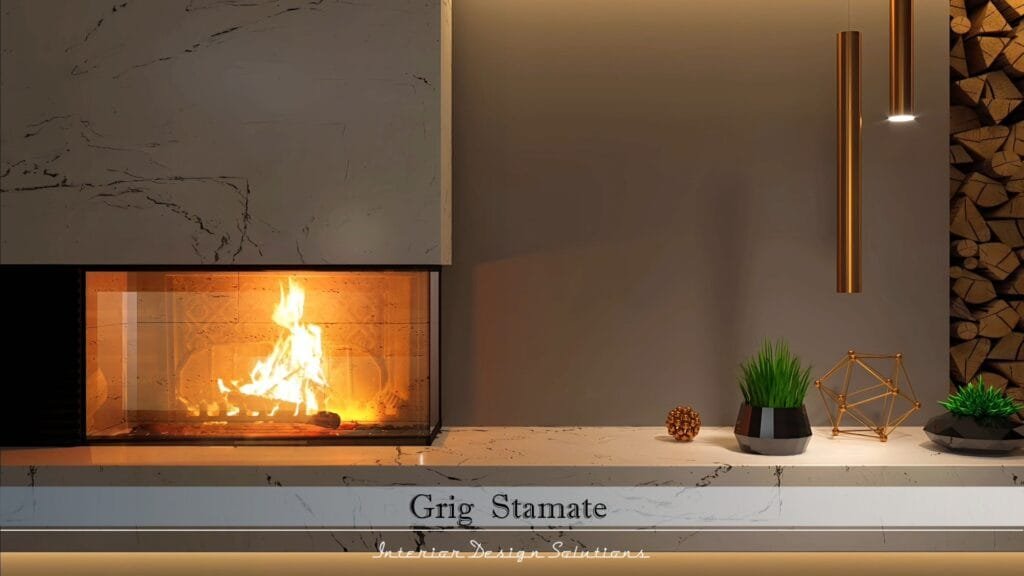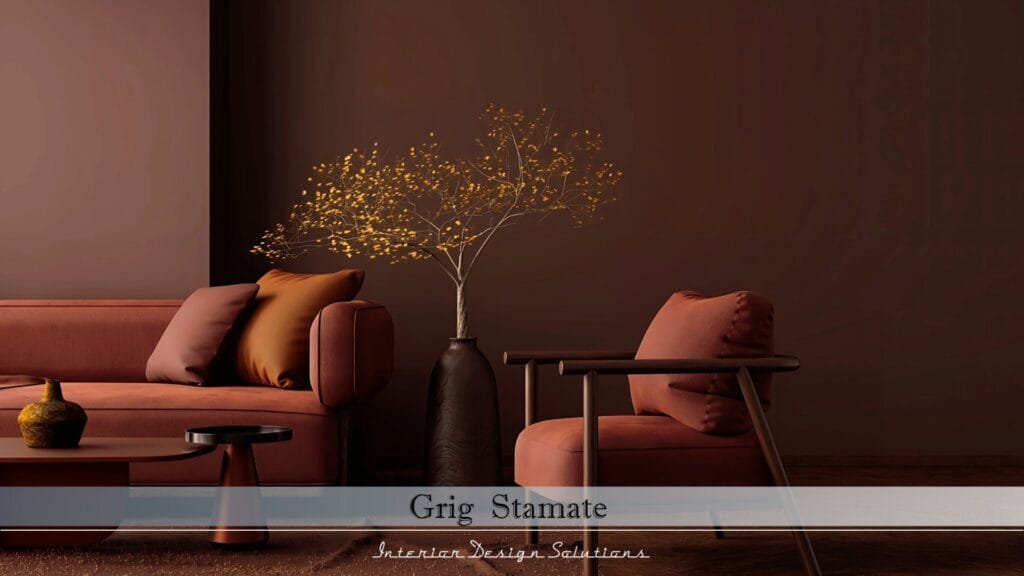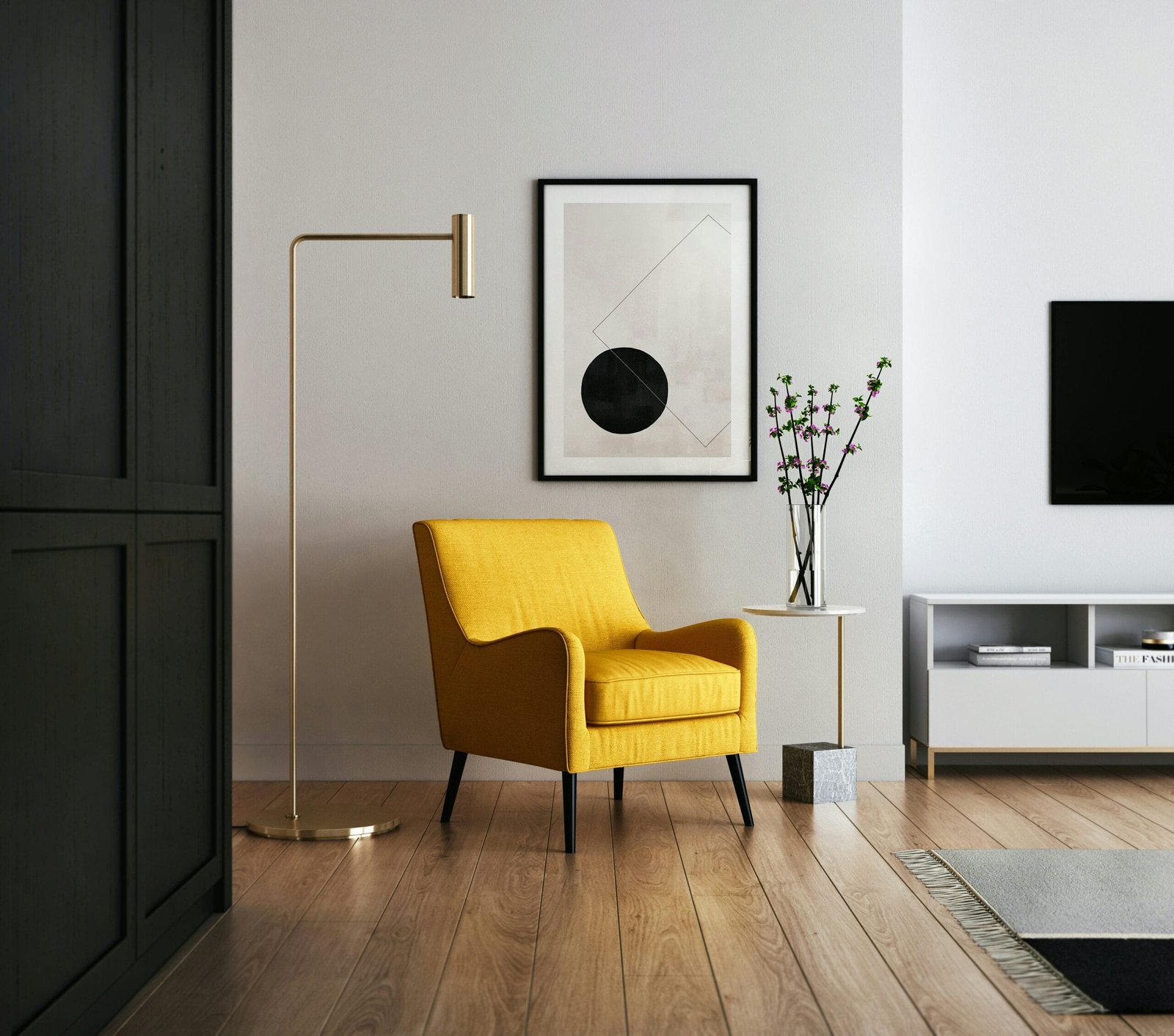Discover the essentials of minimalist décor, a design philosophy rooted in simplicity, functionality, and intentionality. This blog post explores how to create a serene atmosphere through clean lines and neutral palettes while infusing warmth with textiles and plants. Learn how strategic use of colors, textures, and decorative elements can transform a minimalist space into a cozy retreat without sacrificing its core principles. Ideal for those looking to create a balanced living environment, this guide offers innovative tips for enhancing your home with character and inviting ambiance.
Understanding Minimalism in Home Design
Minimalism in home design is characterized by an emphasis on simplicity and functionality, striving to create spaces that are free from unnecessary clutter and distractions. The core principle of minimalism is the adage “less is more,” which encourages the use of essential elements and a restraint in ornamentation. This design approach often features clean lines, neutral color palettes, and a limited selection of materials, creating an aesthetic that can sometimes feel stark or cold.

The minimalist aesthetic values open spaces and natural light, aiming to enhance the feeling of spaciousness within a home. By focusing on a few key pieces and using them thoughtfully, minimalist design seeks to create interiors that are visually striking yet restful. However, this very simplicity can lead to perceptions of unwelcomeness if not executed with care. It is essential to strike a balance between minimalism and warmth, as a home should ideally feel inviting and comfortable.
Please read our article watch the newly uploaded video from our YouTube channel:
“Grig Stamate – Interior Design Solutions”
https://www.youtube.com/@GrigStamate
How to Warm a MINIMALIST DÉCOR: 60 Fabulous Home Interiors (video)
Here, you can see other related videos from our channel:
50+ Cozy Living Rooms: Stylish, Minimalist & Chic – A Dreamy Retreat (video)
Minimalist Living Rooms | 55 Stylish and Functional Top Design Ideas (video)
To embrace minimalism without sacrificing warmth, homeowners may incorporate textures, soft furnishings, and carefully chosen colors. Natural materials such as wood, cotton, and wool can introduce an inviting dimension, while strategic use of lighting can create cozy atmospheres that soften the minimalist aesthetic. Furthermore, including personal touches such as artwork or plants can enhance the warmth and personality of minimal spaces. A warm minimalist home is an artful blend of simplicity and comfort, encouraging a lifestyle of mindfulness and intentionality.
As we explore how to infuse warmth into minimalist décor, it is important to rethink and redefine how we perceive minimalism. By thoughtfully integrating warmth into a minimalist design, it is possible to create inviting spaces that resonate with beauty and tranquility. In doing so, we enhance not only the functionality of our homes but also the overall quality of our living environments.
The Power of Area Rugs
In minimalist décor, where simplicity and functionality reign, the addition of area rugs can significantly enhance warmth and comfort. These oft-overlooked elements serve not only as decorative features but also as crucial components in defining spaces within a room. A carefully selected area rug can create visual boundaries, delineating different functional areas while adding an inviting touch to an otherwise stark space.
When choosing an area rug, fabric selection plays a pivotal role. Natural fibers such as wool and cotton are excellent choices for minimalist interiors, as they provide durability and softness underfoot. Wool rugs, in particular, offer a luxurious feel along with thermal insulation, contributing to a cozy environment. For those seeking a lightweight option, cotton rugs can be easily cleaned and are available in various colors and patterns, making them ideal for bustling areas of the home.
The color and pattern of an area rug are equally important in harmonizing with minimalist aesthetics. Neutral tones like beige, gray, or soft pastels can complement the existing minimalist palette, maintaining a seamless look. Alternatively, introducing a subtle pattern, such as geometric shapes or organic motifs, can add interest without overwhelming the simplicity of the space. The key is to ensure that the rug enhances the room’s overall aesthetic rather than distracts from it.
Additionally, the placement of an area rug can change the mood of a room dramatically. A well-placed rug can soften hard surfaces, such as hardwood or tile, providing a tactile and inviting feel. It can also anchor furniture, bringing coherence to the spatial layout. Overall, the right area rug is a powerful tool in minimalist décor, capable of transforming a stark setting into a warm, welcoming environment that invites relaxation and comfort.
Curtains That Create Warmth
Curtains play a pivotal role in enhancing the warmth of a minimalist décor. While minimalism often emphasizes open spaces and simplicity, the right choice of curtains can bridge the gap between starkness and comfort. The material, color, and design of curtains can significantly influence the ambiance of a room, allowing homeowners to create a more inviting and cozy atmosphere.
When selecting curtains, one must consider the fabric type. Sheer curtains, for instance, allow natural light to filter through, maintaining an airy feel while adding a sense of intimacy to the space. These lightweight fabrics can bring a delicate touch to a minimalist interior, softening sharp lines and creating a layered effect without overwhelming the clean aesthetic. On the other hand, heavy curtains provide a stark contrast. Opting for thicker, richer materials not only adds warmth but also offers insulation benefits, making them particularly suitable for colder climates.
Color selection is another essential aspect. Neutral tones, such as beige, taupe, or soft grays, align seamlessly with minimalist themes, enhancing the existing decor while fostering a calm environment. However, introducing warmer shades, like deep browns or muted earth tones, can create a sense of shelter and comfort. Patterns may also be incorporated thoughtfully; subtle geometric designs or gentle textures can maintain the minimalist integrity without detracting from the overall aesthetic.
Ultimately, the curtains chosen should serve to unify the space, allowing homeowners to embrace both minimalism and warmth. By thoughtfully selecting the fabric, color, and patterns of curtains, individuals can enhance their minimalist decor, making their homes feel more welcoming and cozy while staying true to the essence of simplicity.

Injecting Color Accents
Minimalist décor often emphasizes simplicity and a restrained color palette, yet the careful introduction of color accents can significantly enhance the vibe of these spaces. By strategically incorporating hues that resonate with your personality, you can infuse warmth and character without overwhelming the minimalist aesthetic. The key lies in choosing the right colors and placement that harmonize with the existing design while allowing for self-expression.
The first step in integrating color accents is selecting the right shades. Opt for colors that complement the base tones of your minimalist decor. Soft pastels or bold jewel tones can create stunning contrasts against neutral backgrounds, adding visual interest. For example, a striking cobalt blue throw pillow on a gray sofa not only provides a pop of color but also adds depth to the overall composition. Similarly, consider using earthy tones like terracotta or muted greens to introduce a sense of calmness and connection to nature, aligning perfectly with the minimalist philosophy.
In terms of placement, consider incorporating color through various elements such as artwork, decorative items, or textiles. A vibrant piece of art can serve as a focal point, drawing the eye and elevating the room’s aesthetic. Wall art, particularly in abstracts or botanical themes, can help maintain the minimalist ethos while adding personality. Additionally, utilizing accessories like vases, books, or sculptures in accent colors can enhance the visual appeal without cluttering the space.
It is also essential to maintain balance within the minimalist framework. Limit the number of color accents to a few choice pieces, ensuring they interact well with each other and the predominant palette. By doing so, you still adhere to the principles of minimalist design, creating an inviting atmosphere that celebrates creativity and individuality. Such thoughtful applications of color not only enrich minimalist interiors but also create spaces that feel personal and curated.
Choosing the Right Wall Art
In a minimalist setting, the choice of wall art plays a pivotal role in enhancing the overall ambiance of a space. Minimalism emphasizes simplicity and function, yet the right artwork can serve as a stunning focal point that introduces depth and character, thereby complementing the restrained aesthetic typically seen in such interiors. When selecting wall art, homeowners should consider pieces that resonate with them emotionally, as these selections will ultimately reflect their personalities and preferences.
Scale is a crucial factor when choosing wall art. A large piece can command attention and become a striking centerpiece, while smaller artworks can create a more cohesive gallery effect when grouped thoughtfully together. For a minimalist approach, opting for one or two oversized pieces can simplify the visual narrative, allowing each artwork to be appreciated without overwhelming the viewer. Conversely, smaller pieces arranged strategically can articulate a personal story, showcasing the inhabitants’ tastes and experiences.
Color is another vital element to consider. In minimalist décor, where neutral palettes often dominate, vibrant artwork can infuse energy and warmth into the room. Alternatively, soft, muted colors in artwork can enhance serenity and maintain the tranquil atmosphere that minimalism aims for; thus balancing both bold and subtle choices is essential. The emotional impact of color cannot be understated, as it has the potential to evoke feelings of joy or calmness depending on the hues selected.
Placement of the wall art is equally important in ensuring the chosen pieces thrive within the space. Artworks should be hung at eye level to draw attention while ensuring they integrate seamlessly with the surrounding décor. By choosing wall art that ignites joy and warmth, homeowners can create inviting atmospheres that resonate deeply with both themselves and their guests.
Greenery: Bringing Nature Indoors
Incorporating greenery into a minimalist décor can significantly enhance both the aesthetic appeal and the air quality of a home. Plants are not merely decorative items; they serve a vital role in creating a tranquil environment and promoting overall well-being. By selecting appropriate plant species, individuals can soften stark designs, transforming minimalist spaces into inviting sanctuaries.
When choosing plants for a minimalist aesthetic, it is essential to consider varieties that complement the clean lines and restrained color palettes typically associated with this style. Low-maintenance options such as snake plants, pothos, and succulents are ideal for this purpose. These plants do not require extensive care while providing a touch of vibrancy to any space. Additionally, larger plants like fiddle leaf figs or rubber trees can serve as striking focal points, emphasizing height and form without overwhelming the minimalistic design.
Placement also plays a crucial role in maximizing the calming effects of greenery. Strategically positioning plants in corners, on shelves, or as centerpieces not only accentuates their beauty but also contributes to a sense of balance within the room. For instance, arranging a grouping of small pots on a dining table or placing a tall plant in an empty corner can create layers of visual interest while maintaining a clean and uncluttered look.
Furthermore, the benefits of having plants indoors extend beyond aesthetics. Numerous studies have shown that indoor plants can improve air quality by filtering toxins and releasing oxygen. This natural purification not only enhances the physical environment but also promotes mental well-being, making spaces feel more serene and lively. By integrating greenery into minimalist decor, one can cultivate an atmosphere that is both calming and invigorating, achieving harmony between nature and contemporary style.
Decorative Pillows and Throws
In the realm of minimalist décor, the strategic use of decorative pillows and throws serves as an effective approach to infuse warmth and comfort into the space. While minimalism often embraces a restrained palette and simple lines, incorporating a carefully curated selection of soft furnishings can evoke a sense of coziness that remains true to minimalist principles. The key lies in thoughtful selection and placement, ensuring these elements enhance rather than dominate the overall aesthetic.
When choosing pillows and throws, consider varying fabric textures to add depth. Options such as bouclé, linen, or velvet can provide a tactile contrast against smoother surfaces. For example, a chunky knit throw draped over a sleek sofa instantly invites relaxation, while a collection of linen pillows in muted tones can evoke serenity. Layering is also crucial; a larger throw can serve as a foundational element, while smaller pillows add visual interest and comfort. This layering technique not only defines the space but also encourages a more inviting atmosphere.
The ability to mix and match patterns and colors can further enhance the minimalist décor. Opt for geometric patterns or subtle stripes that resonate with the simplicity of minimalism, ensuring they do not overshadow the overall design. By incorporating a limited color palette, such as soft earthy tones, you can unify the different elements. This careful selection fosters cohesion while introducing warmth and inviting charm into the space.
Ultimately, decorative pillows and throws act as versatile accessories that can transform minimalist interiors into cozy retreats. By selecting the right fabrics, layering thoughtfully, and mixing complimentary patterns and hues, homeowners can create comfortable lounging areas that encourage relaxation without compromising the serene essence of minimalism.
Fancy Furniture Pieces That Make a Statement
The selection of furniture plays a crucial role in establishing the ambiance of any space, particularly within minimalist décor. Unique and carefully chosen furniture pieces can inject warmth and personality while adhering to the simplicity that defines minimalism. Emphasizing quality over quantity, it becomes essential to select statement pieces that not only serve a functional purpose but also reflect individual style and taste.
When choosing furniture for a minimalist environment, consider timeless designs that include rich textures and bold shapes. These elements can facilitate an inviting atmosphere that counters the starkness often associated with minimalism. For example, a striking Scandinavian chair with warm wood tones can create a focal point without overwhelming the space. Similarly, a beautifully upholstered sofa in a tactile fabric can provide both comfort and sophisticated charm, making it a favorite spot for relaxation.
Incorporating statement furniture involves a mindful approach to color and material. Opt for pieces with natural finishes that resonate with the minimalist ethos yet stand out within the overall design. A coffee table crafted from reclaimed wood, with its unique grain and warm hues, can enhance the room’s character while adhering to eco-friendly principles. Additionally, consider accent chairs or side tables with sculptural qualities, seamlessly blending art and function.
Ultimately, the key lies in balancing boldness with functionality while aligning choices with personal values. Engagement is encouraged; readers are invited to share their favorite furniture finds that encapsulate warmth and individuality, contributing to the broader narrative around how to achieve a cozy yet minimalist environment. Through such thoughtful selections, it is possible to curate a space that feels both inviting and true to minimalist principles.
Layering Textures for Depth
Creating a warm and inviting atmosphere in a minimalist décor can be achieved through the thoughtful layering of textures. By incorporating a variety of materials, one can maintain the clean lines and simplicity characteristic of minimalism while introducing an element of depth and comfort. Consider beginning with a foundation of soft, neutral fabrics such as cotton or linen for furniture upholstery and window treatments. These materials serve as a blank canvas that enhances the overall aesthetic while allowing for additional textures to shine.
To elevate the space further, incorporate cozy blankets and plush cushions. Throw blankets can be draped over a sofa or chair, providing both comfort and visual interest. Opting for a mix of textures, such as a chunky knit alongside smoother, more refined textiles, can create a delightful contrast, inviting people into the room. Additionally, using various shades of the same color can help in preserving the minimalist palette while still adding warmth through texture.
Wood accents are another excellent way to introduce warmth into minimalist home interiors. Items such as reclaimed wood shelves or a rustic coffee table can introduce organic textures that beautifully complement the softness of textiles. These natural elements can serve as focal points that enhance the overall design while remaining unobtrusive. Coupling these wooden features with metallic accents like brass or copper can further enhance the warmth, creating a harmonious blend.
Lastly, don’t shy away from experimenting with other materials, such as ceramics or woven baskets. These items can serve both functional and decorative purposes, adding layers of texture without overwhelming the minimalist aesthetic. As you explore different combinations, you may discover what resonates with your style the most, striking a balance between inviting warmth and minimal complexity in your home décor.
Final Thoughts: Crafting Your Dream Warm Minimalism
As we draw our exploration of warm minimalism to a close, it’s important to recognize that achieving this aesthetic is a personal journey. The key takeaways highlight the significance of balancing simplicity with warmth, ensuring that your home reflects not only a curated design but also a sanctuary that resonates with your individual taste. Warm minimalism invites the use of natural materials, soft color palettes, and carefully chosen décor elements to create an inviting atmosphere devoid of clutter.
When crafting your dream warm minimalist space, consider how each piece in your home contributes to the overall ambiance. Items with organic textures and muted tones can harmoniously complement minimalist designs. Accessories such as soft textiles, warm lighting, and subtle artwork can enhance the emotional connectivity of your environment. Moreover, integrating personal touches, whether through family heirlooms or unique finds, establishes a more profound sense of belonging. Prioritize what truly matters to you and select items that encourage a calm, serene lifestyle.
We encourage readers to reflect on the emotions they want their spaces to evoke. A cozy living room, a serene bedroom, or an inspiring home office are all achievable through thoughtful design choices. Remember, warm minimalism is about quality over quantity, and making space for what you love can lead to a more fulfilling home experience. By taking small steps towards this style, you’ll discover how a minimalist approach can thrive with warmth.
As part of this community, we invite you to share your experiences with warm minimalism. Showcase your beautifully designed spaces online, and inspire others to embark on their own journeys toward creating welcoming minimalist environments. It is through sharing that we can foster inspiration and support one another in crafting homes that reflect our unique identities.
Other related posts from our website:
Let’s see here, three of them:
https://howtobuildahouseblog.com/50-cozy-living-rooms-stylish-and-minimalist-inspirations/
https://howtobuildahouseblog.com/stylish-and-functional-top-ideas-for-minimalist-living-rooms/
https://howtobuildahouseblog.com/sleek-and-serene-fabulous-modern-minimalist-interiors/
Thank you so much for your attention.
We also sincerely hope you like our ideas from this post, and you have also enjoyed our uploaded YouTube video.
See you next time at another article. Thank you so much for your time. Bye now

![Small Dreamy Family Homes [NORDIC STYLE] #10 Small Dreamy Family Homes [NORDIC STYLE] #10](https://howtobuildahouseblog.com/wp-content/uploads/2025/02/SnapShot0-2-211x150.jpg)

No Responses